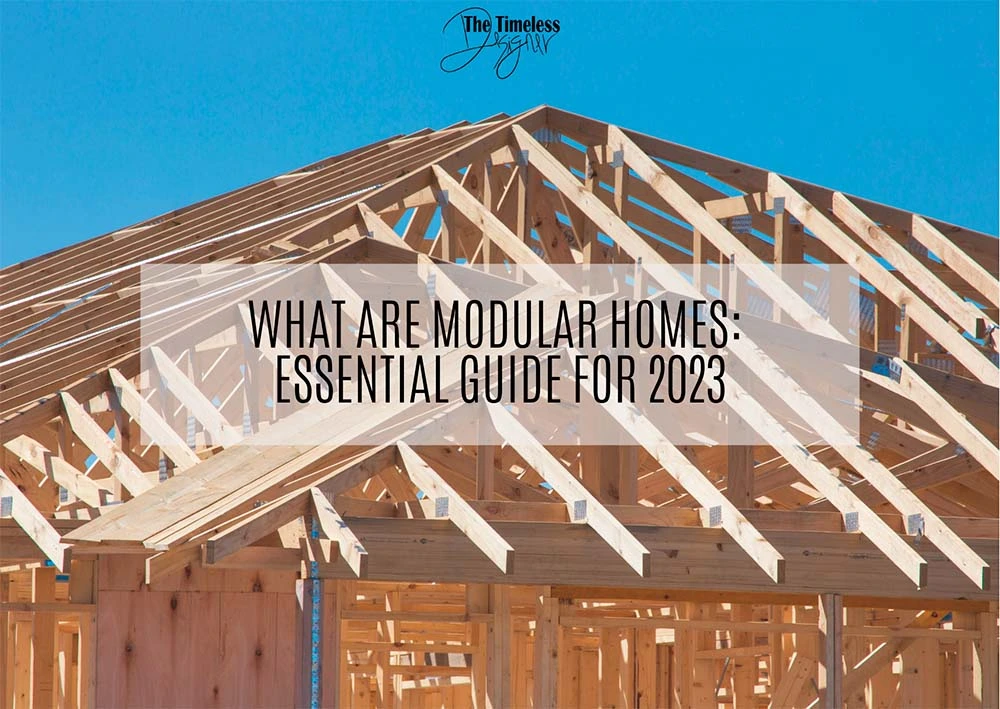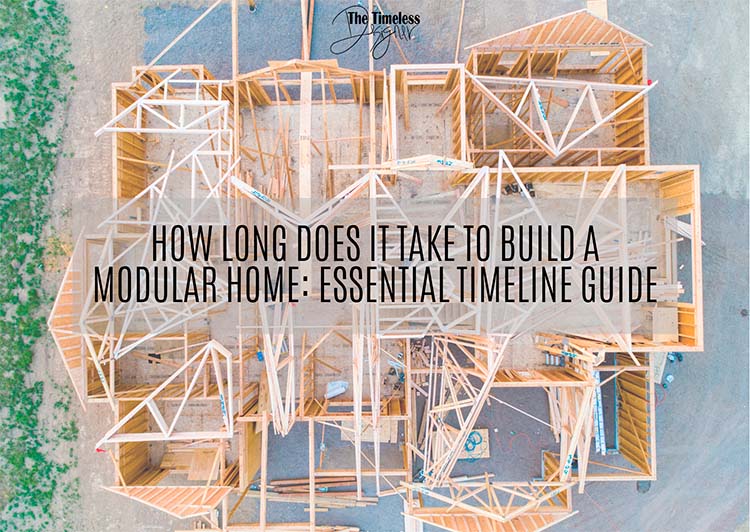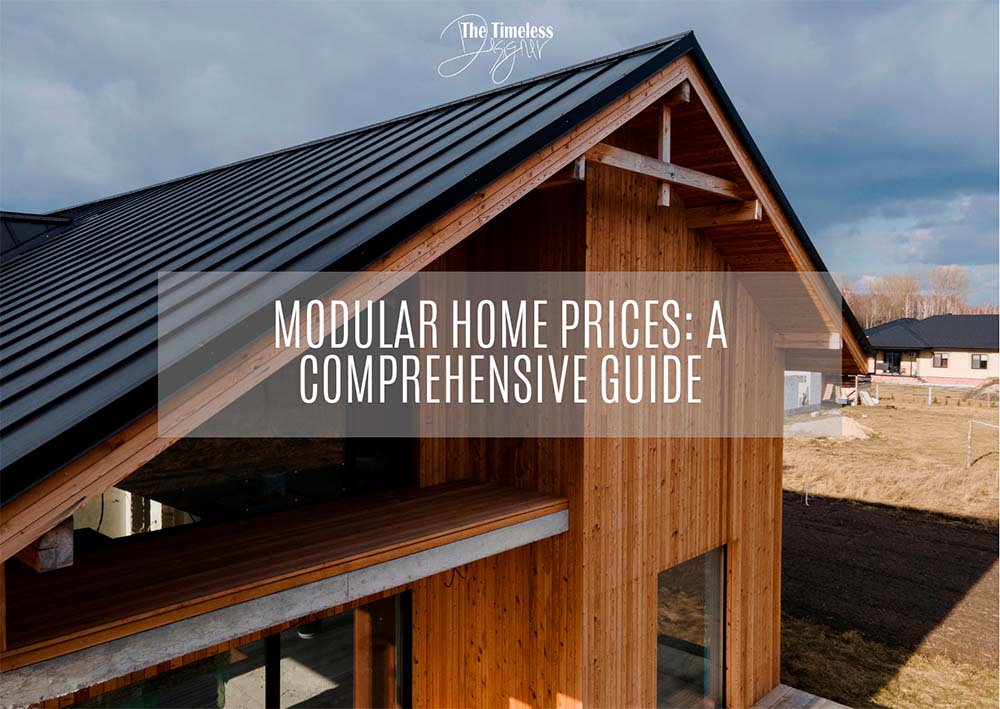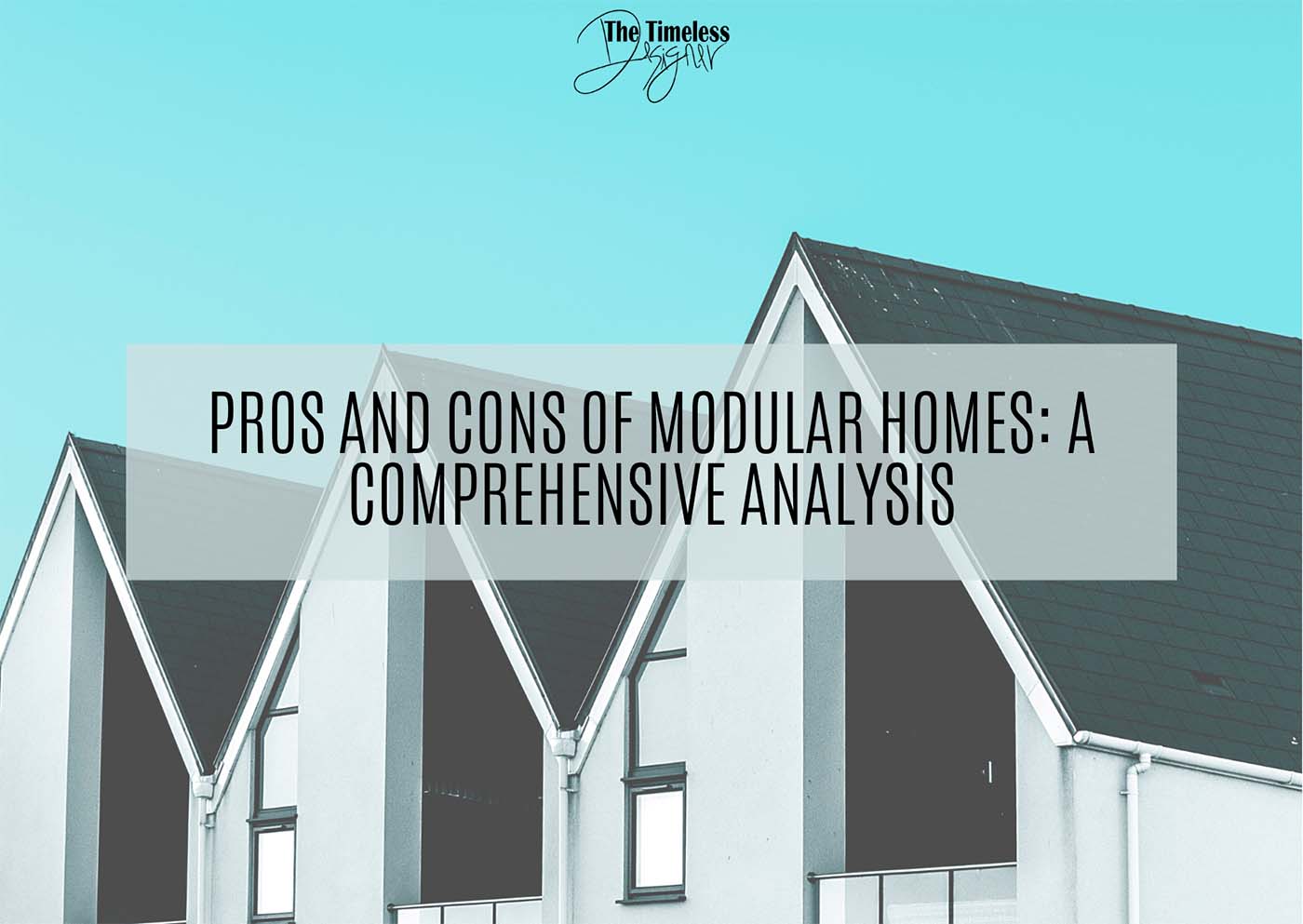Modular additions offer an efficient and affordable solution when you’re looking to expand your living space. They are custom-made, prefabricated structures that can be easily integrated into your existing home. As someone considering a modular addition, it’s essential to understand the benefits and processes involved in choosing this construction method.
One of the key advantages of modular additions is their reduced construction time. Since they’re built in a controlled factory environment, the process is not affected by weather conditions or other external factors, resulting in a quicker completion. Additionally, these structures are built to meet the same building standards as traditional construction methods, ensuring a high-quality addition to your home. Moreover, modular additions are a cost-effective option as they tend to be less expensive than traditional stick-built constructions.
In your quest for additional living space, modular additions present a versatile and attractive choice for homeowners. Carefully considering the options and benefits, you’ll surely find the perfect solution that suits your needs and budget.
Understanding Modular Additions
What are Modular Additions?
Modular additions refer to sections of a home constructed off-site and then delivered and assembled at the homeowner’s location. These units can be used to expand an existing structure, providing extra rooms or even entire levels without the hassle and duration of traditional construction.
Benefits of Modular Additions
- Efficiency: Modular additions are built in a controlled factory environment, which translates to streamlined production, fewer delays due to weather or labor issues, and a quicker turnaround time. This speedier process means that you’ll spend less time waiting for your new addition to be completed, allowing you to enjoy the added space sooner.
- Quality: Because they are built in a factory, modular additions can maintain a level of consistency and precision that traditional on-site construction often struggles to achieve. Building your addition off-site also helps ensure that it meets all necessary quality inspections before arriving at your location, so you can trust that it meets both your expectations and industry standards.
- Affordability: A significant advantage of modular additions is their cost-effectiveness. Since modular homes and additions are built in an assembly-line fashion, manufacturers can reduce labor and material costs, passing those savings on to you. This affordability makes modular additions an attractive option, especially if you’re working with a limited budget.
- Value: Modular additions not only provide an affordable way to expand your home but also add value to your property. Homebuyers appreciate the benefits of modular construction, such as energy efficiency and quality construction, which can make your property more attractive on the market.
- Customization: Just like traditional homes, modular homes can be customized to meet your specific needs and preferences. With a wide range of design options, materials, and finishes available, you can work with the manufacturer to create an addition that complements your existing home and meets your unique requirements.
Adding a modular home addition can transform your living space, providing you with the extra room you need in a time-efficient, cost-effective, and customizable way. As you weigh your options, consider the advantages of modular additions and how they can help you achieve your home expansion goals.
Types of Modular Additions
Second Story Additions
When you need more space in your home, a second story addition can be the solution without expanding your home’s footprint. In this process, a pre-fabricated second story is built at a different location and then delivered and installed to your existing home. This method saves time and causes minimal disruption to your daily life. A second story addition can include bedrooms, living areas, and dormer windows to suit your style and needs.
Garage Additions
If you’re looking to add a garage to your home, a modular garage addition is an excellent option. Modular garages are built off-site and then installed at your location. These garages can be attached or detached, depending on your preference and local zoning restrictions. One of the benefits of a modular garage addition is the reduced construction time and increased structural durability. Remember to verify whether you can legally build an addition onto your home, considering any covenants or deed restrictions, and make sure it meets your space requirements.
Bedroom and Living Area Additions
A modular bedroom or living area addition can optimize the available space in your home. They are a cost-effective and time-saving solution for enhancing your home’s style and functionality. These additions can be attached to your existing structure or function as standalone extensions.
Some popular types of modular bedroom and living area additions include:
- Master suites: Increase the size and luxury of your sleeping quarters with a new walk-in closet and en-suite bathroom.
- Family rooms: Create a comfortable space for family gatherings, entertainment, and relaxation.
- In-law suites: Accommodate elderly family members or long-term guests in adequately designed spaces tailored to their needs.
When exploring modular additions, keep in mind the building regulations in your area, and consult with experienced professionals to ensure a seamless integration of the new space into your existing home.
Basement Additions
Ever wondered what lies beneath? The untapped potential of your basement might just surprise you. The concept of a modular basement addition is relatively new, but it’s worth exploring.
Pre-fabricated basement modules, customized to your needs, can transform this often-overlooked space into a valuable asset. Think entertainment room, home gym, guest suite, or even a private library. Such an addition gives you more space without taking up your yard or expanding your home’s footprint.
Bear in mind, though, local regulations and potential challenges, such as water tables and soil conditions, may dictate the feasibility of a basement addition. Consulting with professionals is crucial to navigate this process smoothly. While the idea may seem unconventional, a modular basement addition can indeed bring added value and versatility to your home.
Modular Addition Process
Design and Planning
In the design and planning phase, you’ll work with a professional to create a custom plan for your modular addition. This plan will include details like the size and layout, as well as specific features like windows, kitchen, and roof design. The design process also involves selecting materials for your addition, considering your budget and preferences. Make sure to consider the compatibility of your new addition with your existing home’s style and architecture.
Preparing the Site
Once the design is finalized, the next step is preparing the site for your modular addition. This usually involves excavating the area, ensuring adequate access for the crane, and preparing any necessary foundations, such as piers, slabs, or crawl spaces. It’s essential to address any potential issues beforehand, such as removing obstacles or tree stumps, to ensure a smooth installation process.
Installation
During the installation phase, the modular sections are delivered to your site and assembled using a crane. Careful coordination and communication between the crane operator and the installation team are crucial for a successful installation.
The modular construction process means that much of the work, such as installing windows, the kitchen, and the roof, is completed off-site in a controlled environment. This not only saves time but also helps maintain high-quality standards and reduces waste.
Finishing Touches
Once your modular addition is installed, the final step is adding the finishing touches. This includes joining the new addition to your existing home and ensuring a seamless connection. Electrical, plumbing, and HVAC systems are then connected and tested to ensure they are functioning correctly. Finally, any necessary exterior work like siding and landscaping is completed to give your addition a polished appearance.
The modular addition process, from design to completion, is both efficient and cost-effective, enabling you to expand your living space with minimal disruption. As you can see, modular additions offer a great alternative to traditional construction methods, allowing you to enjoy a beautiful, functional space in a shorter timeframe.
Customization and Design Options
Window and Door Options
When considering a modular addition for your home, you have a wide variety of window and door options to choose from. For instance, you can select energy-efficient windows to provide insulation and help decrease your energy costs. Similarly, you might opt for sliding glass doors for easy access to your studio shed or new study area. In addition, you can choose from different styles and materials, such as wood, vinyl, or aluminum, to match your existing home and your design preferences.
Architectural Styles
There is a diverse range of architectural styles available when it comes to modular home additions. Whether you’re looking to add a prefab home addition such as a home office, laundry room, or dining expansion, you can find designs that align with your existing structure and suit your tastes. Some popular choices include traditional gabled roofs, contemporary flat-roofed designs, and dormers to enhance the look and function of your space.
Interior Design Choices
The flexibility of modular design allows you to customize the interior of your addition to meet your needs and style preferences. You can create spaces tailored specifically for your desired purpose, such as:
- A cozy home office with built-in shelves and ample natural light
- A functional laundry room with counter space and storage options
- A welcoming dining area featuring unique lighting and a comfortable atmosphere
Furthermore, you have the freedom to select from various materials for flooring, insulation, and siding to create a space that is both visually appealing and energy-efficient. By working with a design professional and carefully considering each aspect of the interior, you can create a modular addition that seamlessly blends with your existing home and improves its overall value.
Considerations Before Adding a Modular Addition
Zoning Restrictions and Building Codes
Before beginning your modular addition project, ensure that you can legally build an addition onto your home. Check for any covenants or deed restrictions and be aware of zoning restrictions that could prevent you from building an addition. You should also investigate local building codes to make sure your project complies with all regulations. Consulting with your local government or a professional modular home builder can help clarify these potential restrictions.
Choosing the Right Modular Home Builder
Selecting the right modular home builder is crucial for a successful project. Research and compare builders in your area that have experience with modular additions. Look into their previous projects, designs, and options offered to determine if they align with your vision for the addition. Consider factors such as their reputation, customer reviews, and the quality of their work. A knowledgeable builder like Next Modular will be able to assist you with local zoning restrictions and building codes, as well as guide you through the process of selecting the perfect design for your needs.
Factors Affecting Cost
The cost of a modular addition will depend on several variables, including:
- Design: Custom designs tend to be more expensive than standard designs. If you opt for a unique addition, such as a master bedroom suite or an extra-large living space, this will likely increase the cost.
- Square Footage: The larger the addition, the higher the cost. Consider the amount of space you need and be mindful of how it will affect the overall price.
- Options: The materials and finishes you choose for your modular addition can impact the cost. High-end materials and features, such as hardwood floors, granite countertops, or custom cabinetry, will increase the overall price.
- Site Preparation: Preparing your property for the addition may involve land clearing, grading, or foundation work. These factors will also contribute to the overall cost of the project.
Take the time to thoroughly research and consider the factors affecting the cost of your modular addition. Ensure you have a clear understanding of the design, square footage, and options you want, as well as the potential costs involved. This will help you make informed decisions and create a modular addition that meets your needs and budget.
Mathematical Concepts in Modular Additions
Modular Arithmetic Applications
Modular arithmetic, a system of arithmetic for integers, is widely used in various applications such as cryptography, computer science, and number theory. In this system, numbers “wrap around” upon reaching a certain value called the modulus. Essentially, modular arithmetic deals with remainders after applying operations like addition, subtraction, multiplication, and division on integers.
You will often use modular arithmetic in problem-solving situations that require:
- Manipulating large numbers, such as finding the last digit of an exponentiated number.
- Simplifying complex calculations with periodic patterns or cyclicity.
- Handling circular or repeating structures in geometry, combinatorics, or number theory.
Problem Solving and Number Theory
In number theory, modular arithmetic plays a crucial role. It’s beneficial for solving problems that involve congruences. For example, using Euclidean division, you can determine if two numbers are congruent modulo a given modulus. Additionally, the Extended Euclidean Algorithm helps in finding the greatest common divisor and modular inverses of numbers.
Modular arithmetic also involves interesting properties and theorems. Euler’s theorem, for instance, highlights the relationship between exponentiation and modular arithmetic. Another popular theorem is the Chinese remainder theorem, which is used to solve systems of congruences with different moduli.
Modular Arithmetic in Computer Science
In computer science, modular arithmetic is employed in areas like cryptography and computer algebra. Cryptography relies heavily on the properties and operations of modular arithmetic for secure and efficient encryption and decryption processes.
On the other hand, computer algebra involves the manipulation and calculation of mathematical expressions using modular arithmetic to simplify, evaluate, and solve problems.
Remember to apply modular arithmetic responsibly and accurately when working with various mathematical and real-life situations. Don’t be afraid to use tools like calculators to aid in your problem-solving process, but ensure you maintain a thorough understanding of the underlying concepts and principles in modular arithmetic.
Final Thoughts
In summing up this journey through the world of modular additions, it’s crystal clear that these clever and cheap prefab wonders truly embody the future of home expansion. They bust the myths of time-consuming traditional construction methods and usher in an era of customization, speed, and affordability.
From the humble garage to an imposing second story, modular additions offer a palette of possibilities to match our most daring domestic dreams. No weather can delay their creation, no budget should fear their cost. Their consistent quality is the bedrock upon which your dreams can take shape, while their potential to boost your property’s value is the cherry on top.
So next time you find yourself yearning for that extra bedroom or bespoke home office, give a nod to modular additions. Your home, wallet, and schedule might just thank you!




